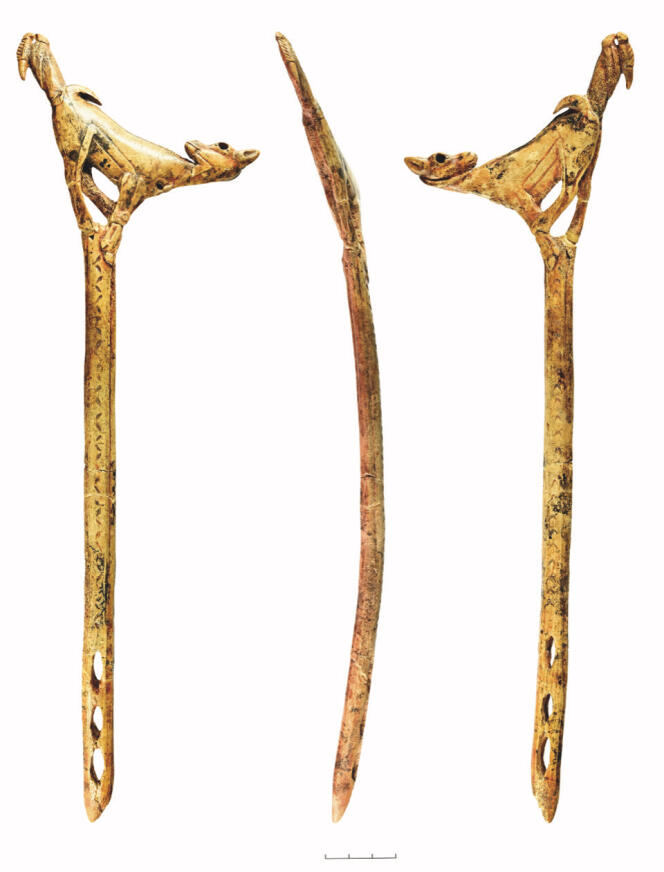
The generation born at the turn of the century sometimes finds it hard to imagine the not-so-distant smartphone-free world their parents grew up in. And it's all the more difficult to project ourselves 16 or 17 millennia into the past, to a time when the climate was beginning to warm up after the last ice age. Welcome to the Magdalenian period, one of the last hunter-gatherer cultures of the Upper Paleolithic.
Try to imagine yourself among these "nomads pursuing large herds of herbivores, especially reindeer. These are people who move around during the summer months," explained Pierre Cattelain, Scientific Director of the Musée du Malgré-Tout, a Belgian archaeology museum in Viroinval in southern Belgium. "But in winter, they make much longer encampments, like the Indigenous peoples of the Great Plains and Canadian Prairies or the Inuit. They live close to their stockpiles for a few months, in relatively bright cave entrances."
The Mas-d'Azil cave in the Ariège southern French region is just such a site. Excavations began there in the second half of the 19th century and resumed in the late 1930s under the impetus of a couple, Saint-Just and Marthe Péquart. "The story is a bit painful," admitted Cattelain. "They were excellent prehistorians, but very right-wing, and Saint-Just Péquart was shot during the Liberation [of France by the Allies, towards the end of WW2]." Before that, in 1939-1940, at Mas-d'Azil, the Péquarts worked in the still unexplored "Silex" gallery, where they discovered a magnificent, delicately carved reindeer antler spear-thrower. It depicts what appears to be a young goat, perhaps a chamois, with two birds pecking one another on its rump. Cleverly, the tail of one of the birds forms the hook used to lock the spear in place. The object was therefore christened the "Antler spear-thrower."
A birthing scene?
But what is a spear-thrower? It consists of a rod serving as a launching pad for a spear: "The hook lengthens the hand," explained Cattelain. "It gives an accelerated momentum at the moment of launch. The initial speed of the projectile is greatly increased." This hunting weapon has been documented as far back as 23,000 or 24,000 years ago. Those made of wood have disappeared, and only bone, ivory or reindeer antler throwers remain. The Mas-d'Azil spear-thrower is the subject of much debate, with something curious emerging from the animal's hindquarters: "At first, it was interpreted as the site of defecation," recalled Cattelain. "But it doesn't match, and it's more likely to be a birth! The antler thruster is therefore probably a doe thruster..."
You have 15.42% of this article left to read. The rest is for subscribers only.